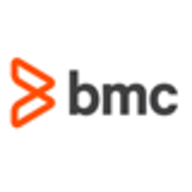


SolarWinds Network Configuration Manager and BMC TrueSight Network Automation are competing network management solutions. User reviews indicate that although SolarWinds offers competitive pricing and support, BMC TrueSight's comprehensive features elevate it as the superior product according to many users.
Features: SolarWinds Network Configuration Manager is praised for its robust automation, policy compliance features, and cost-effectiveness. BMC TrueSight Network Automation is highlighted for its advanced configuration management, seamless scalability, and detailed performance monitoring. Users generally find BMC's features to be more sophisticated, providing greater versatility and control.
Room for Improvement: SolarWinds could benefit from enhanced performance monitoring capabilities, more intuitive navigation, and better integration with third-party tools. BMC TrueSight could improve by streamlining the setup process, enhancing integration with third-party tools, and providing a simpler user interface. SolarWinds users focus more on usability, whereas BMC users emphasize integration and deployment aspects.
Ease of Deployment and Customer Service: SolarWinds Network Configuration Manager receives favorable feedback for its straightforward deployment and responsive customer service. BMC TrueSight Network Automation, while noted for its more complex setup, is recognized for its comprehensive support resources. Users rate SolarWinds higher for ease of deployment but appreciate BMC's extensive customer service.
Pricing and ROI: SolarWinds users appreciate the cost-effectiveness and believe it offers good value for money with a favorable ROI. BMC TrueSight, although considered more expensive, is valued for its long-term investment potential. Despite the higher initial setup cost, BMC users find the ROI justifies the price due to its enhanced capabilities. Users generally perceive BMC TrueSight as offering a better long-term return on investment.
Everything we've gained from it makes my job easier day after day, and I see value in it as an engineer.
Importantly, when someone leaves the company, it helps protect document access on their devices.
Applications are deployed through Intune, and we see fewer tickets for common issues because we can resolve them through the solution.
When a support ticket is submitted, it directly reaches someone with Intune support expertise.
When I contacted Microsoft, they had the same expertise, if not more, which is phenomenal because I felt heard and my problem was solved.
Sometimes, the support provided is excellent, and the representative is knowledgeable, while other times, the service needs improvement.
Technical support is limited but generally acceptable as we possess skilled personnel, making us less dependent on SolarWinds.
SolarWinds tech support is a strong point.
The scalability of Microsoft Intune is ten out of ten.
Ideally, we want to automatically segregate devices based on user properties like primary use, but currently, dynamic groups seem limited to device properties.
It supports organizations with 200 endpoints and those with more than 15,000 endpoints.
The product is scalable as SolarWinds increased its licensing capacity from supporting 12,000 devices to 48,000 devices with stack licenses.
We have not experienced downtime, bugs, or glitches.
Microsoft Intune has been very stable.
A couple of years ago, the performance was not as good as it is now, but there are noticeable backend improvements.
Features like unlocking devices sometimes fail, and the support offered for other operating systems is insufficient.
There are communication issues, so you might start working with a feature without knowing if it will be deprecated six months from now.
Many third-party companies offer single-pane-of-glass reporting that shows you what your update environment looks like, how your patch is doing, application status, etc., but Intune's reporting is not intuitive.
Currently, there are limitations in performing tasks without logging into routers directly.
I would like to see more features in terms of wireless reporting and more historical information for client connectivity in SolarWinds Network Configuration Manager.
Introductory professional services, like a fast-track service, were included with our E5 membership, and there have been no additional costs.
The Intune suite and add-ons, such as batch management and remote help, are costly.
It costs approximately forty euros per user per month.
The licensing costs of SolarWinds Network Configuration Manager are expensive, but considering its reliability, feature enhancements, and support, it is worthwhile.
Intune excels in configuration and compliance management for Windows 10, ensuring devices receive timely updates and adhere to organizational standards.
Dynamic groups allow us to set conditions for automatic membership, eliminating the need for user intervention or manual review and ensuring a seamless workflow.
Windows Autopatch is the most valuable because it removes the burden of patch management.
The solution facilitates compliance reporting through an NCM module, effectively generating out-of-the-box reports on software vulnerabilities and outdated software versions.
Configuration pushing, upgrade capabilities, job backup, configuration backup, and real-time configuration change monitoring are highly beneficial features of SolarWinds Network Configuration Manager.



Microsoft Intune provides centralized management of mobile devices and applications, ensuring security, compliance, and productivity through integration with Microsoft services like Microsoft 365 and Azure Active Directory.
Organizations use Intune for managing mobile devices and applications, enhancing security and compliance across platforms. With features like single sign-on, conditional access, and zero-touch deployment via Autopilot, it facilitates efficient operations. Intune's scalability, easy enrollment, and capabilities such as remote wipe support diverse device management, offering robust data protection and efficient operation. Despite its features, improvement areas include reporting, compatibility with non-Microsoft devices, and better support for macOS and Linux devices.
What are the key features of Microsoft Intune?
What benefits should users look for in reviews?
In industries such as finance, healthcare, and education, Microsoft Intune is implemented to ensure secure and compliant device management. Companies leverage its capabilities to deploy security policies and manage both corporate-owned and BYOD environments, facilitating a unified approach to data protection and compliance.
Network automation and management software reduces network outages and downtime by automating configuration, change and compliance processes. Organizations depend on high performance across their network to keep the business running at peak efficiency but new security threats make it hard for network administrators to keep pace with the demands for new services and safeguard the health of the network.
We monitor all Configuration Management reviews to prevent fraudulent reviews and keep review quality high. We do not post reviews by company employees or direct competitors. We validate each review for authenticity via cross-reference with LinkedIn, and personal follow-up with the reviewer when necessary.